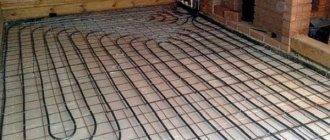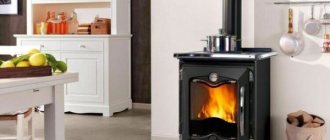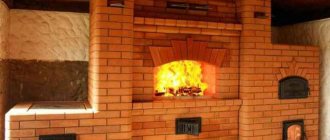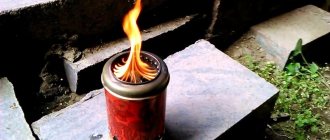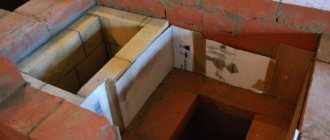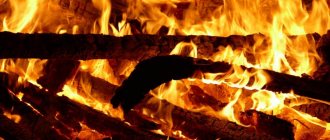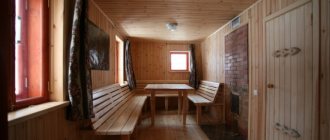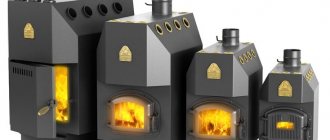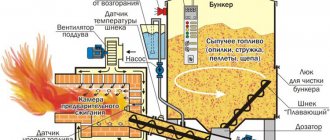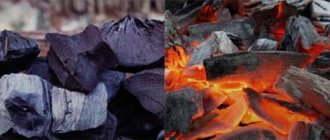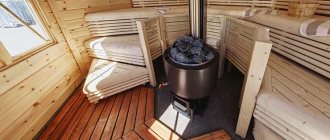What is furnace efficiency?
Efficiency – efficiency factor.
In physics, this term refers to the ratio of the real energy of the heat source (furnace) to the maximum energy indicator of the burned fuel. This is exactly the indicator that is indicated in the technical data sheet of the finished heating device. But it is important to understand that the figure indicated there will not correspond to the real one for several reasons. Collapse Contents:
- What affects efficiency?
- Ways to increase efficiency
- Installation of a steel pipe in the ash pit
- Install a steel pipe into the chimney
- Additional heat extraction from the stove
- Conclusion
Of course, a lot depends on the design of the heating system (this will be discussed in more detail in the next chapter). But there are also external factors:
- The quality of the fuel used is of great importance. The efficiency of a wood-burning stove will drop by 3 times if it is heated with raw material.
- Efficiency depends on the completeness of fuel combustion; this is affected not only by its quality, but also by air humidity, room temperature, and atmospheric pressure.
- Operating mode. If a person constantly keeps the firebox door open, one can only dream of high efficiency.
It becomes obvious that the efficiency factor is not a strictly fixed indicator. It can be reduced if the stove is used incorrectly, or the design can be improved by significantly increasing the efficiency parameter.
What affects efficiency?
Whatever the design of a wood-burning stove, the heat transferred to it will never be equal to what is obtained in its very “heart”, where the fuel burns. The reason is that part of the energy escapes through leaking dampers, foundations, and vents. In addition, the efficiency is affected by the design features of the furnaces:
- Wood stove base material. For example, cast iron structures retain heat for a long time, increasing efficiency. The efficiency of a brick kiln is greater, but it is difficult to maintain it at a consistently high level. Furnaces made of alloy steel have low efficiency, so they are often used in combination with fireclay.
- Height, cross-section of the smoke exhaust pipe. They determine the draft of a wood stove. Moreover, a decrease in efficiency will occur with both weak and excess thrust.
- Type of firebox. Open fireplaces are the least profitable option in terms of efficiency, since it is difficult to raise the indicator above 25%. By covering the fire (for example, with refractory glass) with similar parameters of a stove with an open firebox, the efficiency increases by 2-3 times.
- A stove with high efficiency will be obtained if there is afterburning of flue gases, a heat-intensive lining (talcomagnesite is best suited), and the connection of 2 or more water heating circuits.
The combustion device is also important - long-lasting, alternating or minimal. Increased efficiency is achieved in long-burning designs (which can be heated for more than 5 hours). If you are allowed to light a wood stove for 2-3 hours, then you should not expect high rates of room heating while saving fuel.
Selection of oven
Central heating, especially for a separate house, is today a rather expensive pleasure, which is also supplied intermittently. Therefore, many people buy ready-made stoves, trying to choose models that combine excellent performance characteristics, reasonable cost, and, of course, high efficiency. However, solid fuel stoves are considered less efficient than gas stoves because they have a low efficiency. At current prices for coal, peat, fuel oil or firewood, the cost of heating a building will be high, even higher than for central heating services - unless care is taken to purchase or build a high-efficiency stove.
What stove models should you consider when choosing? If the financial side of the issue is decisive for the choice, then let’s take a look at domestic models, since foreign analogues have a higher price, using the same principle of fuel combustion. These will be heating stoves such as “Professor Butakov”, “Teplodar”, “Varvara”, “Termofor” and the like.
Stove "Professor Butakov"
These models are distinguished by high efficiency, since heat loss through smoke is minimized in them, the uniformity of the combustion process is adjusted, and there is practically no under-combustion of the filling and CO.
You need to focus on the design of just such stoves if you plan to design and build a stove yourself. In any case, you can’t do without a ready-made project; you will need to use not only brick to build the stove, but also sheet steel, preferably at least 4 mm thick - so why reinvent the wheel if they will soon stop producing it?
Ways to increase efficiency
The designs and diagrams of finished furnaces do not provide for modes with variable efficiency. It all depends on proper operation, as well as the ability to independently upgrade the design. There are three simple ways to increase the efficiency of wood-burning stoves: installing a steel pipe in the ash pit, a metal rod in the chimney, or transferring heat from the tiles through the hood back into the room. Each of the methods for improving efficiency indicators is discussed below.
By the way, you can combine them with each other, then the efficiency of the stove will increase even more.
Installation of a steel pipe in the ash pit
If a wood stove is the only way to heat the room, then the air temperature in the room will continue to decrease for the first 40 minutes after ignition. Moreover, such a decrease will be more intense than after turning off the stove. The reason is the open vent, through which the rarefied warm air of the room is sucked into the smoke exhaust ducts.
As the stove heats up, air will flow through the view in the same quantity, but due to the sufficiently heated walls of the stove, heat transfer will begin to prevail. But is it possible to speed up this stage and thereby increase efficiency by 10-15%? You can - to do this, when laying it in the ash pit, install a steel pipe with a damper. As a result, when the view is opened, much less warm air is sucked in (it will be drawn not from the room, but from under the floor).
It is important to remember: the described method of increasing the efficiency of a wood-burning stove has a drawback - the chimney draws air from under the floor, so it will cool down quickly. Walking on a frozen floor is unpleasant. To fix this, you can attach a rubber extension with a diameter of 50 millimeters to the end of a steel pipe, then take it outside the wall of the house (then the ash pan will draw in street air).
Install a steel pipe into the chimney
A well-known fact: very hot air is exhausted through the chimney. Moreover, the longer the stove is heated, the less heat will be removed from the brickwork of the chimney and the hotter the evaporated smoke will be. Consequently, due to intensive operation of the furnace, the efficiency will decrease. People have come up with a trick that helps them use the heated air of the chimney to their advantage and prevent the efficiency from decreasing (such a modification is not found anywhere in finished projects).
The essence of modernizing a wood stove is as follows:
- Take a round metal pipe with a diameter of 20-30 cm.
- The pipe is inserted into the chimney elbow at a slight angle.
- If the stove is large and has several smoke exhaust pipe bends, you can insert 3-4 metal pipes.
- The thermal conductivity properties of the metal ensure that heat is removed from the chimney. This heat does not go outside, but returns back into the room.
As a result, due to such simple modifications, a stove with high efficiency is obtained (the efficiency will increase by 15-20%). Warming up the room will be 2 times faster, and fuel consumption, on the contrary, will be reduced.
The only difficulty: modification of the stove with a homemade and simple heat exchanger can only be carried out at the time of laying the chimney. If you need to improve the efficiency of an already installed stove, the chimney will have to be disassembled and then reassembled.
Additional heat extraction from the stove
The heat emitted from the cooking surface of the stove can be redirected back into the room, thereby increasing the rate at which the house warms up. This process is called recycling. As a result, fuel consumption will decrease and efficiency will increase.
This simple upgrade is done as follows:
- A stainless steel hood is made above the stove surface (not close to avoid overheating).
- A quickly heated pipe (cross section 8-10 centimeters) is connected to the hood. For example, the material for it can be galvanized steel.
- The metal base of the tubular outlet must be at least 1 meter long. Further, it is allowed to be fastened with PVC pipes.
- The pipe should be stretched under the ceiling and brought to the coldest part of the room. It is recommended to supplement the design with small fans (a device with a power of 13 watts is sufficient).
Hood on stove
There are no obvious disadvantages to the described method of increasing efficiency. The only inconvenience: when you turn off the stove, the installed tube will stop conducting heat and the indicators will return to their original values.
As an option: you can install filters (anti-grease and carbon) in the hood. Then the air from the stove will be cleared of the odors of food being cooked on the stove (you will get a simple version of an air conditioner, only without discharging warm air through the ventilation shaft outside the house).
Efficiency formula for a Russian wood-burning stove
The material for this article was a 1934 book written by engineer V.P. Protopopov. The material is presented verbatim.
No matter how well-designed a Russian wood-burning stove, its firebox and smoke circulation are, it will not provide high efficiency if the heat developed during fuel combustion is not stored in the mass of the stove itself and transferred to the heated room.
If, after the fire stops, air flows through the stove rather than being transferred to the room, then the heat will be carried away into the chimney. This phenomenon is unacceptable: after the fire stops burning, the flow of air through the stove must be completely stopped. For this purpose, a view or valve was smeared at the beginning of the chimney. Sometimes they are limited to installing sealed combustion and ash doors.
Thus, not all the heat accumulated by the stove during combustion is transferred to the room through the external heat-releasing heating surface of a Russian stove. Some of it is uselessly lost through the pipe at the end of the fire.
The ratio of the amount of heat from the external heat-transmitting surface of the furnace during the time from the beginning of one firebox to the beginning of the next, otherwise, the ratio of the amount of heat transfer to the amount of heat accumulated by its internal heat-receiving surface is called the efficiency of the external heat-transmitting surface of the furnace.
For example, if, when burning wood, a Russian stove received 20,000 cal from combustion products, and released 18,000 cal to the room, then the efficiency of the heat-releasing surface will be equal to:
18000/20000=0.9 or 90%
With proper design, satisfactory equipment and good care, losses after heating are not significant and the efficiency is usually 0.95 or 0.98.
Knowing the efficiency of the firebox, the internal heat-receiving and external heat-distributing surfaces, we can determine the efficiency of the entire wood-burning stove.
So, for example, if these coefficients are respectively equal to 0.9, 0.85, 0.95, then the overall efficiency of the entire furnace will be equal to the product:
0.9 x 0.85 x 0.95 = 0.73.
If 20 kg of peat with a calorific value of 3400 cal/kg is burned, then out of the total available amount of heat in the firebox:
3 400×20=68000 cal,
The only ones that stood out were:
0.9 ×68000=61200 cal;
Of this amount, the inner surface of the walls absorbed during combustion:
0.85 ×61200=52020 cal; :
And finally, it is given out:
0.95 x 52020=49419 cal
We get the same value if we immediately multiply 68000 x 0.73.
Conclusion: The efficiency of a wood-burning stove depends on three values:
- Firebox efficiency;
- Efficiency of the internal heat-receiving surface of the furnace;
- Efficiency of the external heat-releasing heating surface.
And is equal to the product of these three coefficients.
Conclusion
The methods for increasing efficiency described in the article are easy to use and suitable for any wood-burning stove. They increase the efficiency of the heating device by 10-25%. As a result, the room will warm up faster, heat will leave the room more slowly, and fuel consumption will be significantly reduced.
But it is important to remember: any modernization will be in vain if the rules for operating the stove are violated. For example, if you use damp firewood, do not clean the ash pit on time, and keep windows and doors constantly open, you will not achieve high efficiency.
